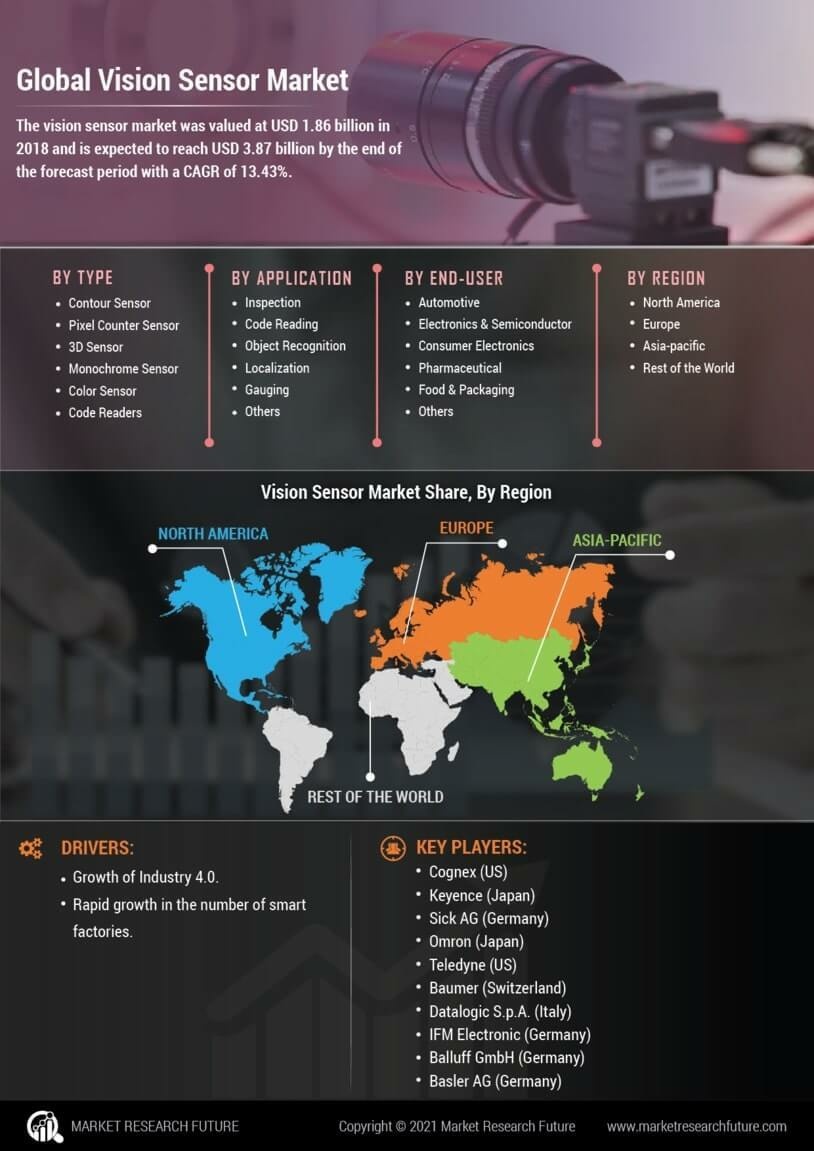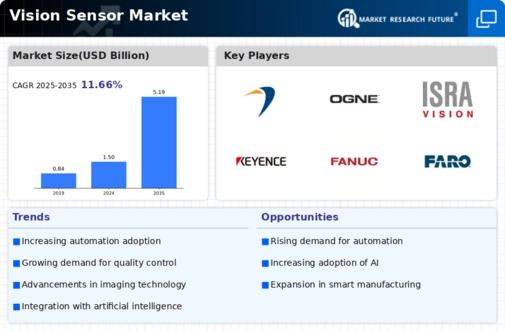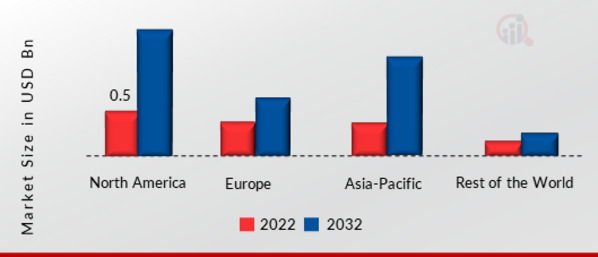Technological Advancements
The Global Vision Sensor Market Industry is experiencing rapid technological advancements that enhance the capabilities of vision sensors. Innovations in artificial intelligence and machine learning are enabling vision sensors to perform complex tasks such as object recognition and real-time data processing. For instance, the integration of deep learning algorithms allows these sensors to improve accuracy and efficiency in various applications, including manufacturing and autonomous vehicles. As a result, the market is projected to reach 1.5 USD Billion in 2024, with further growth anticipated as these technologies evolve and become more accessible.
Rising Demand in Automation
The Global Vision Sensor Market Industry is witnessing a surge in demand driven by the increasing adoption of automation across various sectors. Industries such as manufacturing, logistics, and healthcare are increasingly utilizing vision sensors to streamline operations and enhance productivity. For example, automated quality inspection systems in manufacturing leverage vision sensors to detect defects in real-time, reducing waste and improving product quality. This trend is expected to contribute significantly to the market's growth, with projections indicating a rise to 5.19 USD Billion by 2035, reflecting a growing reliance on automation technologies.
Growing Adoption in Robotics
The Global Vision Sensor Market Industry is benefiting from the growing adoption of robotics in various applications. Vision sensors play a crucial role in enabling robots to perceive their environment and make informed decisions. In sectors such as agriculture, vision sensors are used in autonomous farming equipment to monitor crop health and optimize resource usage. This integration of vision sensors in robotics is likely to drive market growth, as the demand for intelligent robotic systems continues to rise. The anticipated compound annual growth rate of 11.95% from 2025 to 2035 underscores the potential of this segment.
Market Trends and Projections
Expansion in Consumer Electronics
The Global Vision Sensor Market Industry is also expanding due to the increasing integration of vision sensors in consumer electronics. Devices such as smartphones, tablets, and smart home products are increasingly incorporating vision sensors for features like facial recognition and augmented reality. This trend is driven by consumer demand for enhanced user experiences and innovative functionalities. As the market for consumer electronics continues to grow, the demand for vision sensors is expected to rise correspondingly, further contributing to the overall market growth.
Increased Focus on Safety and Security
The Global Vision Sensor Market Industry is experiencing heightened interest in safety and security applications. Vision sensors are increasingly deployed in surveillance systems to enhance security measures in public spaces, transportation hubs, and commercial establishments. For instance, smart city initiatives are integrating vision sensors into traffic management systems to monitor vehicle flow and improve safety. This growing emphasis on safety and security is likely to propel market growth, as organizations seek to invest in advanced technologies that provide real-time monitoring and threat detection capabilities.






















